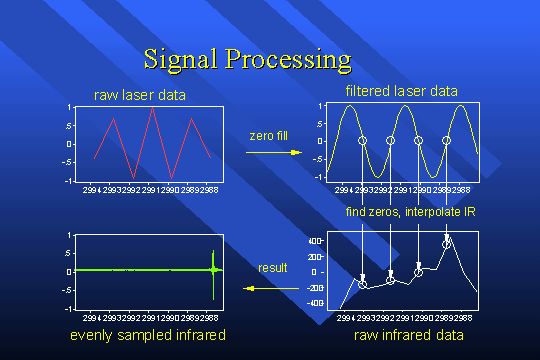| Smoke and Mirrors: Ultra-Rapid-Scan FT-IR
Spectrometry
The laser signal is then filtered and zero -filled. The slopes around the zero crossings are fitted to make a best estimate of the zero crossing positions. Then the IR signal (evenly sampled in time) is interpolated to match the grid of the zero crossings (evenly spaced in retardation). This produces a reconstructed interferogram which can then be processed according to conventional practice. At this point the effects of velocity variation on the phase and amplitude of the signals have been ignored. The data indicate that this isn’t a serious mistake, and in any case, the delays in the two channels can be matched to eliminate any problem. The bandwidth of the laser photodiode and preamp is 9 MHz with a delay on the order of 20 ns. The infrared channel is estimated to have a bandwidth of 400 kHz, so its delay is more significant. A faster infrared detector and preamp would be appropriate for full-speed operation. |
